The Top 8 Worlds In Our Solar System For Life
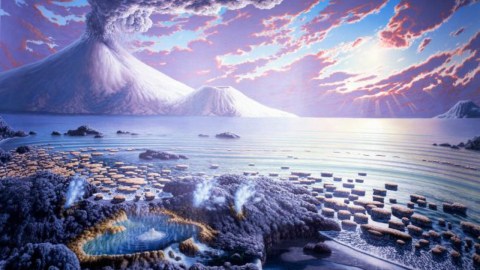
If all the worlds formed together, they have the ingredients for life, too. Maybe it isn’t just Earth who got lucky.
“If I had to describe myself to an alien I’d say I was bigger than the average human, enjoy a drink or two with a good meal and have a bigger head than most. I’d also say I’m really handsome — especially if they were a female alien.” –Dwayne Johnson
Of all the worlds ever discovered in space, Earth — for now — remains unique as the only planet to have the biological processes associated with life on its surface. It seems like it would be absolutely crazy, given how the laws of nature appear to be the same everywhere, if there were simply no biological processes anywhere else in the Universe. Yet as far as we’ve been able to look, find and discover, our world is the only one that’s truly alive.
Yet the ingredients for life, including the full suite of stable elements in the periodic table, the chemical combinations associated with the building blocks of life, and even complex, organic molecules are found literally everywhere we look in space. We find them in the atmospheres of gas giants, on the surfaces of rocky worlds, on moons, asteroids and comets, and even in the gaseous depths of interstellar space.
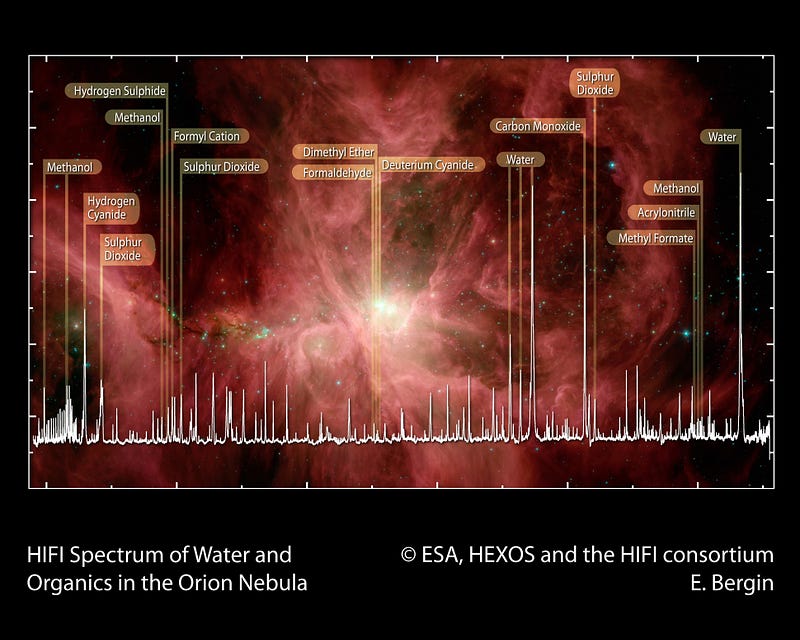
It’s true that here’s a big gulf between “organic molecules” and what we consider today to be a living organism. Although there are a huge host of interesting possibilities for what’s out there, we’ve so far found nothing else on another world that we’d consider to be “alive,” nor have we found remnants of past life on any worlds. But the Solar System is a great place to start, because it’s so close and accessible! While nothing is for certain, we have a number of intriguing possibilities for where the first signs of life beyond Earth might be found.
In order of what we consider most likely to least likely, here are the top eight!
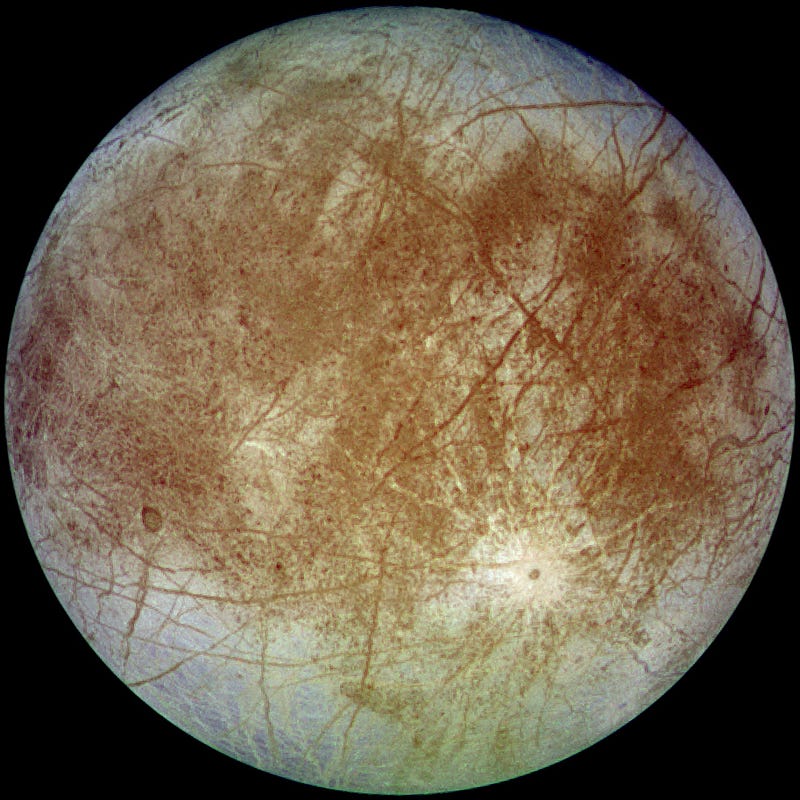
1.) Europa. Jupiter’s second moon, Europa might at first seem like it’s too far from the Sun to be a good candidate for life. But Europa has two special things going for it: a ton of water — more water than on all of Earth — and some internal heating due to the tidal forces of Jupiter. Beneath a surface of ice, Europa has an enormous ocean of liquid water, and the heating of its insides due to Jupiter’s gravity may create a situation very analogous to the life-giving hydrothermal vents on the Earth’s ocean floor. It’s not likely to be life like we see on the surface of Earth, but life that can survive, reproduce and evolve is life any way you slice it.
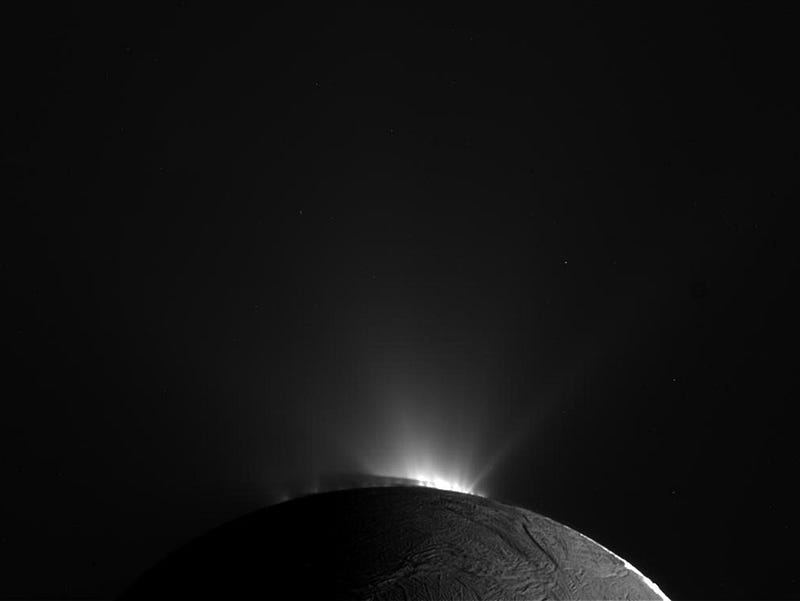
2.) Enceladus. Saturn’s icy moon is smaller and has far less water than Europa, but it announces its liquid ocean (beneath a surface of solid ice) uniquely: by spewing 300-mile plumes of water into space! These geysers let us know for certain that there’s liquid water, and in tandem with the other elements and molecules necessary for life, such as methane, ammonia and carbon dioxide, there just might be life beneath the oceans of this world, too. Europa has more heat, more water and hence — we think — more chances, but don’t count Enceladus out, since it has a thinner ice surface and erupts far more spectacularly, meaning that we could find life with an orbiting mission, rather than having to drill down beneath the surface!
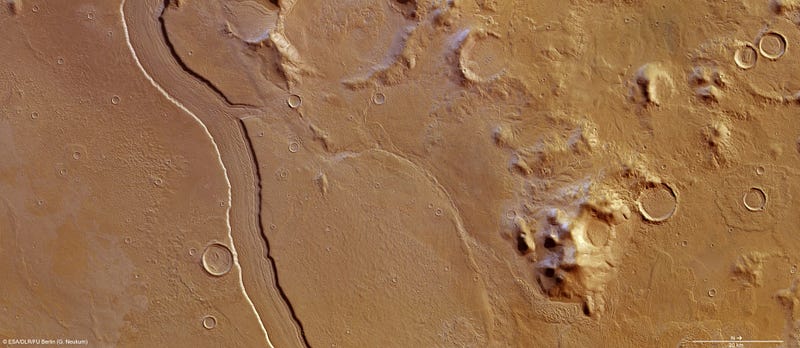
3.) Mars. The red planet was once clearly very, very Earth-like. For perhaps the first billion years of the Solar System, water flowed freely across the martian surface, carving rivers, where lakes and oceans were present, and where we see the remnants of where they were today. Features associated with a watery past, like spherules (often associated with life on Earth), are common. In addition, the Curiosity rover has found an active, underground and variable source of methane, a possible signature of life today.
And now that we know liquid water appears on the martian surface, albeit in a very salty environment, the door is definitely open. Is there life? Was there life at one point, but no longer? Mars is a tantalizing possibility.
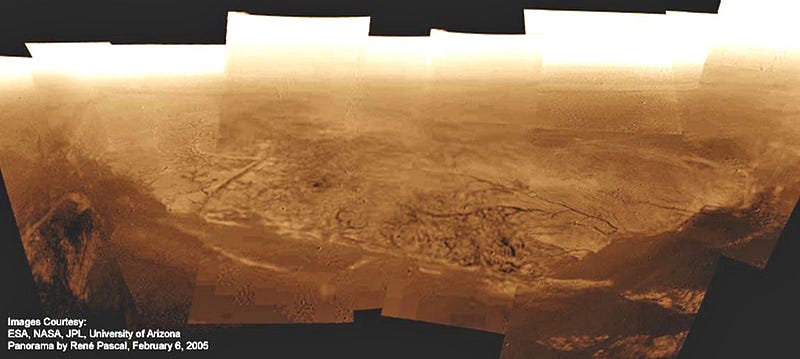
4.) Titan. Enceladus might offer the greatest possibility for Earth-like life in the Saturnian system, but perhaps life takes on a different form? With a thicker atmosphere than Earth, the second-largest moon in our Solar System, Titan, was found to have liquid methane on its surface: oceans, rivers and even waterfalls! Could life make use of methane on another world the same way it makes use of water on Earth? If the answer to that is yes, there just might be living organisms on Titan today.
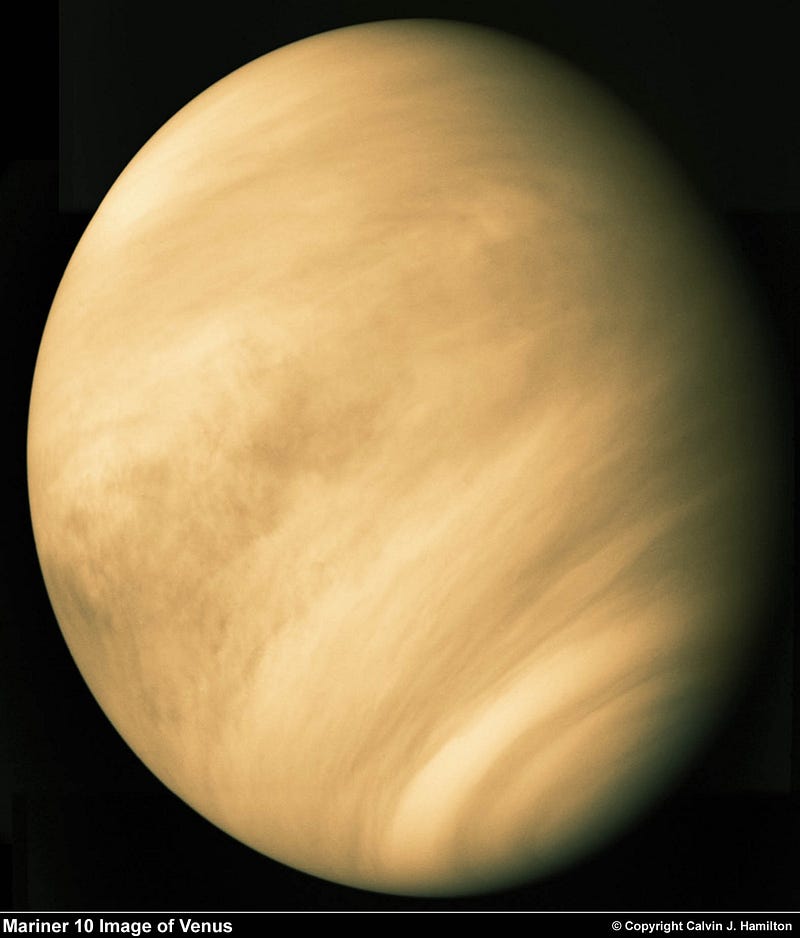
5.) Venus. Venus is hell, literally. At a constant surface temperature of some 900 degrees Fahrenheit, no human-made lander has ever survived more than a few minutes while touched down on our nearest neighboring planet. But the reason Venus is so hot is because of it’s thick, carbon-dioxide rich atmosphere laden with heat-trapping clouds of sulphuric acid. The surface of Venus, though, isn’t the only place to look for life: perhaps something interesting is happening some 60 miles up! Above the cloud-tops of Venus, the environment is surprisingly Earth-like: similar temperatures, pressures, and less corrosive material. It’s conceivable that with its own unique chemical history, that environment is filled with carbon-based airborne life, something that a mission to Venus could easily sniff out.
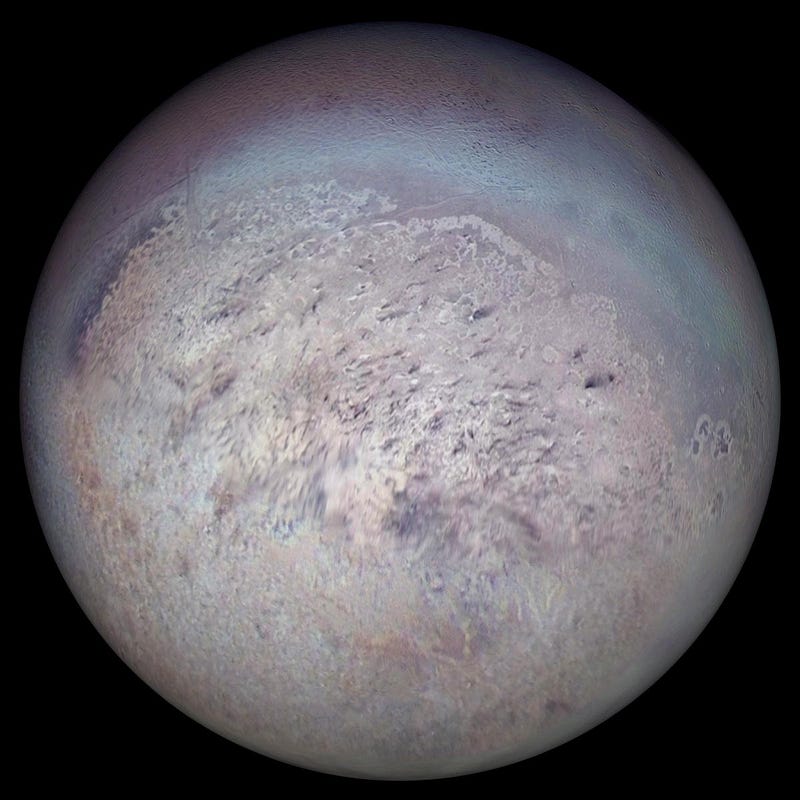
6.) Triton. You might not have heard of Neptune’s largest moon, but it’s remarkable: it has “black smoker” volcanoes, it rotates the wrong way, and it originated from the Kuiper belt. Larger and more massive than both Pluto and Eris, it was once the king of all Kuiper belt objects, and now, in orbit around our Solar System’s final planet, we recognize that it’s covered in many life-giving materials, including nitrogen, oxygen, frozen water and methane ices. Could some form of primitive life exist at these energy interfaces? I wouldn’t rule it out.
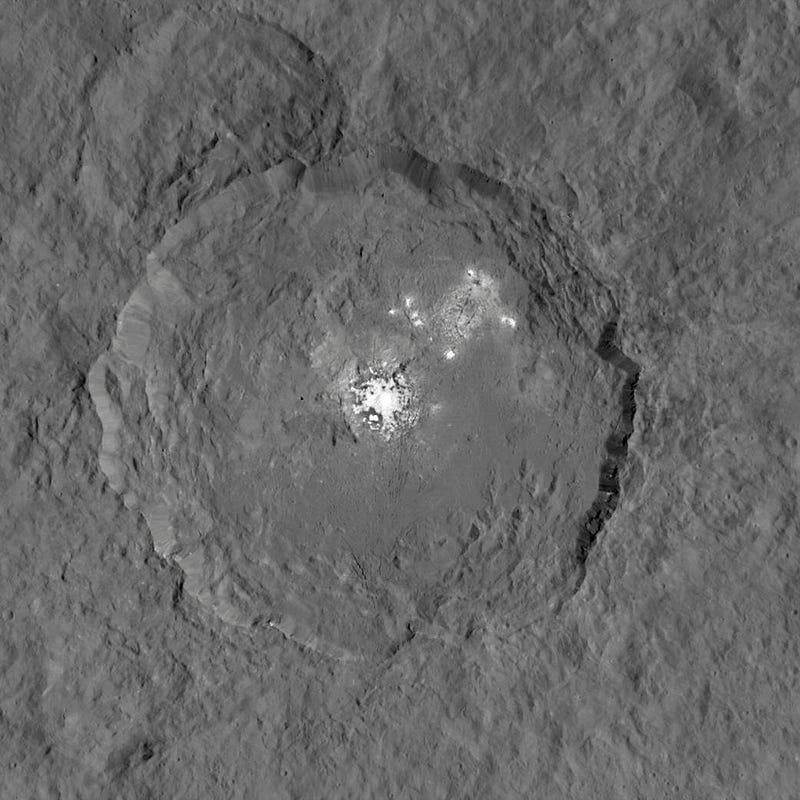
7.) Ceres. It might sound crazy, to think life can exist on an asteroid. Yet when asteroids fall to Earth, we find not just the 20 amino acids essential to life, but nearly 100 others: the building blocks are all there! Could the largest asteroid of them all, the one with those bizarre, unexplained “white spots” actually house some form of life? Although the answer is “probably not,” it’s conceivable that it was actually collisions with asteroids and Kuiper belt objects that brought life toEarth. It might have begun before Earth ever formed, and so the signatures might be embedded within a world like Ceres. We just have to look to find out.
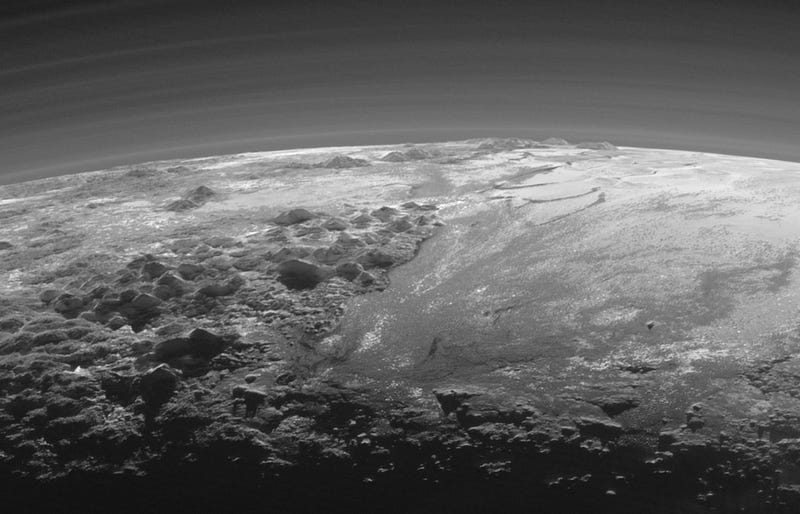
8.) Pluto. Who would’ve expected that history’s outermost world — at a temperature just 100 degrees Fahrenheit above absolute zero — would be a candidate for life? And yet, Pluto has an atmosphere, it has remarkable, changing surface features, it has the same ices that Triton has, and objects just like it may be responsible for bringing much of what looks like Earth’s atmosphere and oceans to our planet. Could it have brought life as well? New Horizons will bring us hints, but to find out for certain, a landing mission will need to take place.
We always think of ourselves as alone in the Universe, and yet that may be more a function of us looking for things exactly like us than of us actually being alone. If we go and investigate, we might not only find life in unexpected, thought-to-be-inhospitable places, we might wind up finding life that looks very little like the life we currently understand. Our logic, our intuition and our inklings can only get us so far. If we want to know, we have to go and look. The Universe has a way of surprising us.
Leave your comments on our forum, and support Starts With A Bang’s Patreon!





